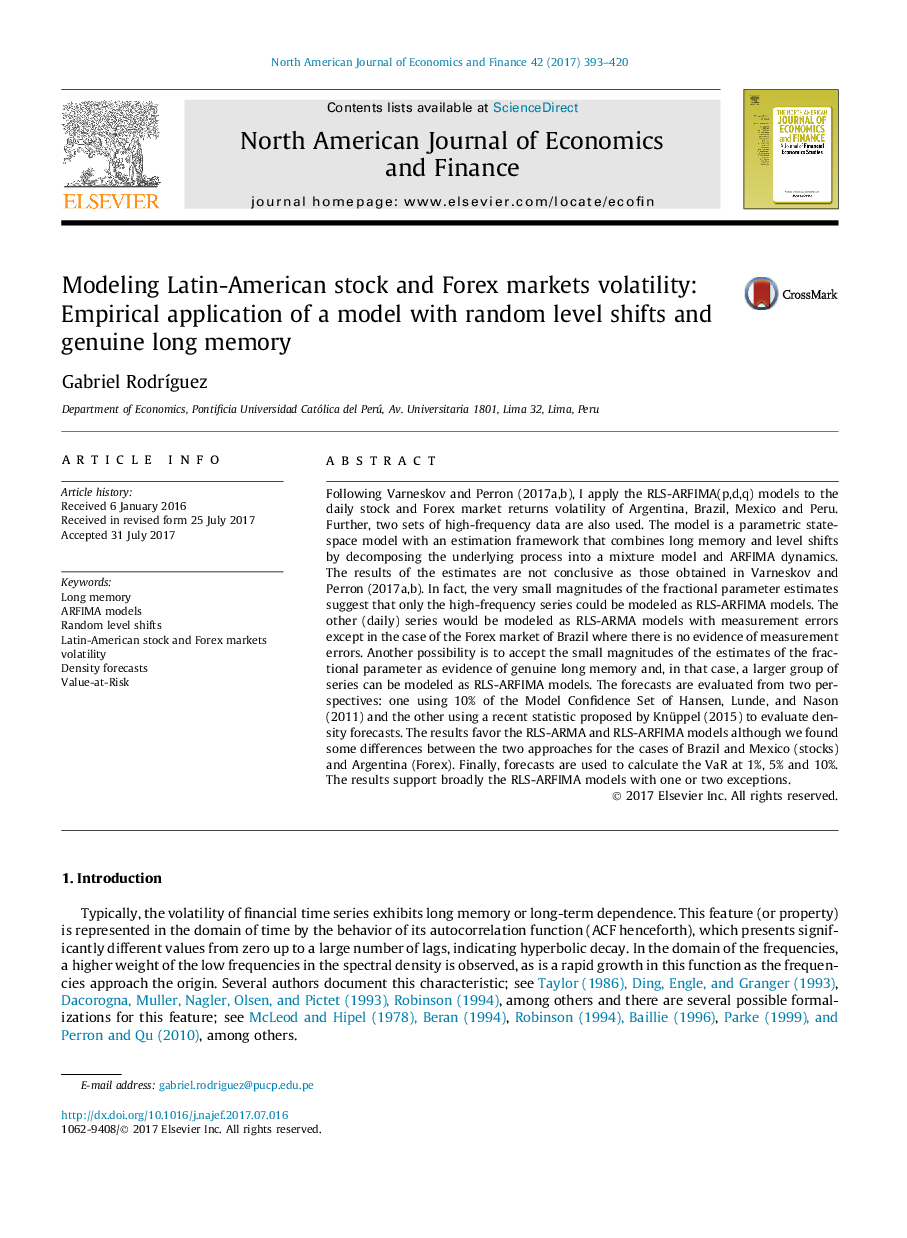| کد مقاله | کد نشریه | سال انتشار | مقاله انگلیسی | نسخه تمام متن |
|---|---|---|---|---|
| 5102191 | 1479772 | 2017 | 28 صفحه PDF | دانلود رایگان |
عنوان انگلیسی مقاله ISI
Modeling Latin-American stock and Forex markets volatility: Empirical application of a model with random level shifts and genuine long memory
ترجمه فارسی عنوان
مدل سازی بورس سهام آمریکای لاتین و نوسانات بازار فارکس: کاربرد تجربی یک مدل با تغییرات تصادفی و حافظه واقعی طولانی
دانلود مقاله + سفارش ترجمه
دانلود مقاله ISI انگلیسی
رایگان برای ایرانیان
کلمات کلیدی
موضوعات مرتبط
علوم انسانی و اجتماعی
اقتصاد، اقتصادسنجی و امور مالی
اقتصاد و اقتصادسنجی
چکیده انگلیسی
Following Varneskov and Perron (2017a,b), I apply the RLS-ARFIMA(p,d,q) models to the daily stock and Forex market returns volatility of Argentina, Brazil, Mexico and Peru. Further, two sets of high-frequency data are also used. The model is a parametric state-space model with an estimation framework that combines long memory and level shifts by decomposing the underlying process into a mixture model and ARFIMA dynamics. The results of the estimates are not conclusive as those obtained in Varneskov and Perron (2017a,b). In fact, the very small magnitudes of the fractional parameter estimates suggest that only the high-frequency series could be modeled as RLS-ARFIMA models. The other (daily) series would be modeled as RLS-ARMA models with measurement errors except in the case of the Forex market of Brazil where there is no evidence of measurement errors. Another possibility is to accept the small magnitudes of the estimates of the fractional parameter as evidence of genuine long memory and, in that case, a larger group of series can be modeled as RLS-ARFIMA models. The forecasts are evaluated from two perspectives: one using 10% of the Model Confidence Set of Hansen, Lunde, and Nason (2011) and the other using a recent statistic proposed by Knüppel (2015) to evaluate density forecasts. The results favor the RLS-ARMA and RLS-ARFIMA models although we found some differences between the two approaches for the cases of Brazil and Mexico (stocks) and Argentina (Forex). Finally, forecasts are used to calculate the VaR at 1%, 5% and 10%. The results support broadly the RLS-ARFIMA models with one or two exceptions.
ناشر
Database: Elsevier - ScienceDirect (ساینس دایرکت)
Journal: The North American Journal of Economics and Finance - Volume 42, November 2017, Pages 393-420
Journal: The North American Journal of Economics and Finance - Volume 42, November 2017, Pages 393-420
نویسندگان
Gabriel RodrÃguez,
